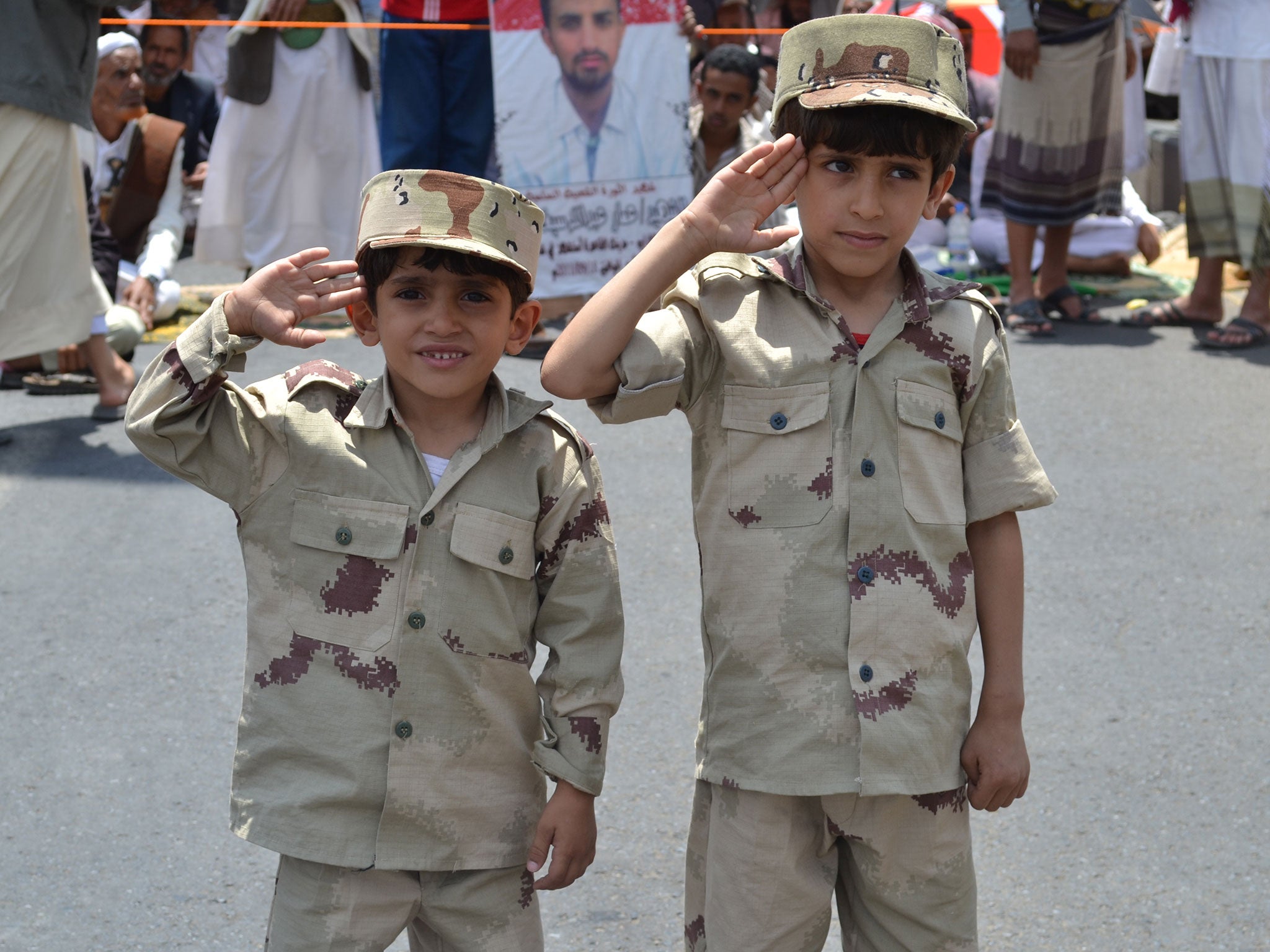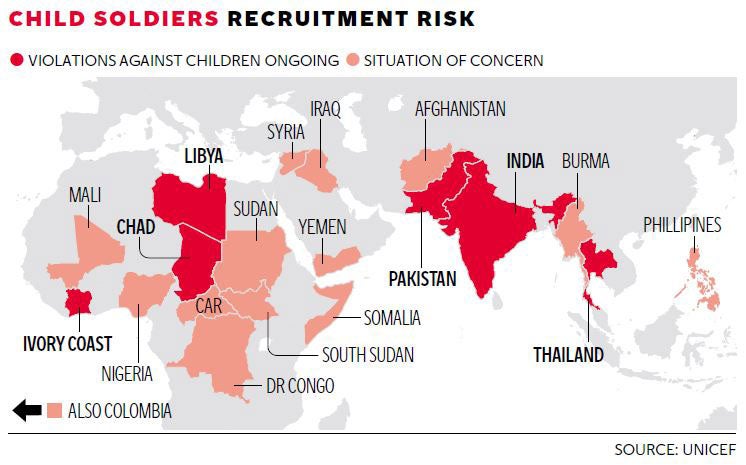Child soldiers make up a third of Yemeni fighters, says Unicef
UN children's programme warns of new wave of young recruits in Middle East and African conflicts

Your support helps us to tell the story
From reproductive rights to climate change to Big Tech, The Independent is on the ground when the story is developing. Whether it's investigating the financials of Elon Musk's pro-Trump PAC or producing our latest documentary, 'The A Word', which shines a light on the American women fighting for reproductive rights, we know how important it is to parse out the facts from the messaging.
At such a critical moment in US history, we need reporters on the ground. Your donation allows us to keep sending journalists to speak to both sides of the story.
The Independent is trusted by Americans across the entire political spectrum. And unlike many other quality news outlets, we choose not to lock Americans out of our reporting and analysis with paywalls. We believe quality journalism should be available to everyone, paid for by those who can afford it.
Your support makes all the difference.Yemen could become a new breeding ground for child soldiers, Unicef has warned, as the rise of extreme violence around the world undermines efforts to end the practice.
Twenty years on from a landmark report that put child soldiers on the global agenda, Unicef says tens of thousands of children are engaged in warfare, as conflicts rage in the Middle East and East Africa.
Around a third of combatants in Yemen’s civil war are children, Unicef estimates. Both the Houthi rebels and militias fighting on behalf of the internationally recognised President Abdullah Mansour Hadi have recruited children to fight on their behalf in the 11-month war, which has so far killed at least 2,800 civilians.
Children as young as 14 are fighting on the front line, according to a Unicef report to be formally published today, which says that both the Houthis and the government have gone back on pledges to the UN that they would end the practice.
Meanwhile, the widespread destruction of schools and infrastructure in the Saudi-led bombardment of the country is further encouraging more children to pick up guns and fight, in exchange for pay of between £3 to £6 a day.
Elsewhere, the rise of terrorist groups such as Isis and al-Shabaab has made negotiation over the issue impossible.
In Iraq and Syria, Isis have featured very young children prominently in their propaganda, and have employed new tactics, such as the use of social media, to lure children into the fight. The group has released videos showing children beheading prisoners and training in military camps.
South Sudan remains the greatest source of concern, with some 16,000 children recruited by both sides in the country’s two-year civil war. Many are taken from their homes, often after local communities are threatened into giving them up in exchange for protection.
But children sometimes volunteer to join the conflict, said Anthony Nolan, a Unicef child protection specialist in the country, driven by a lack of resources, or a desire to seek revenge for their families. Their recruitment threatens to prolong the conflict for generations to come, he said.

“This conflict has become ingrained and inter-generational,” Mr Nolan said. “You’re seeing the cycle continue. Children are being killed because they are being seen as future fighters. Kids are being brought up to hate.”
Unicef’s report, which was unveiled at the British Parliament on Monday night, makes several recommendations for reducing the prevalence of child soldiers across the world. These include better birth registration, and investment in local communities, particularly in schools.
Join our commenting forum
Join thought-provoking conversations, follow other Independent readers and see their replies
Comments